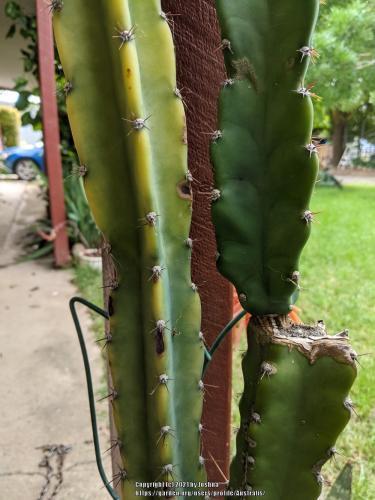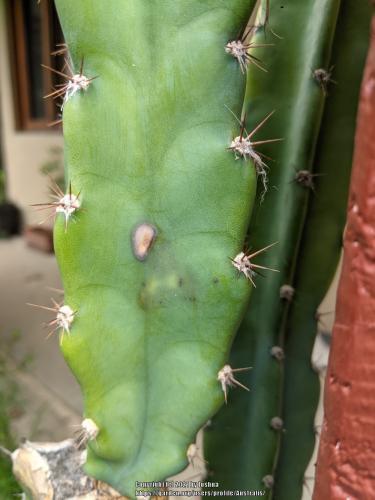And as I was hoping this thread could become a point of reference, let me show off a couple of my most wanted, with the idea of aiding identification.
This is the mealy bug.
It makes a cottony substance (presumably its nest and/or offspring) but the mature bug is big enough to feel when you pinch it between your fingers, confirming its demise.

Mealy bugs are incredibly slow moving insects. Simply removing them from the plant (by a jet of water from a hose) is often sufficient for treatment in the landscape. When you blast them from the growth center, or from the base of leaves near the growth center, you have made a big step toward keeping them gone.
They seem to arrive by air as well as by land. Their preferred method of delivery here seems to be the common ant. They most frequently appear here on Aeonium and some other Crassulaceae, but they seem to be incredibly equal opportunity herbivores, compared to some of the other common pests. Very much camouflaged (and sometimes impossible to detect without close inspection) on the white farinose type of plants.
There are mealy bugs that live primarily or exclusively in the soil, presumably feeding off the roots, and these are stealthier than the others (avoiding detection until a plant is unpotted, usually) but they are really susceptible to systemic insecticides (a drench in insecticidal soap may work great, too) and the treatment is usually for good, in my experience. I do not know enough about bugs to tell you if they are the same species as the others, but I suspect they are not.
Pictured below (with a bit of camouflage) are scale insects. The brown bumps in the picture, not the pink bumps which are part of the plant. So-called hard scale because it has a little shell secreted by the bug around itself as protection, once it locks down and stops moving. That shell is pretty good at keeping your first-line defenses (soap or alcohol spray) from working well.
Same family, slightly different treatment (mature scale bugs like barnacles need to be scraped off the plant for best results), soap and alcohol effective against the juveniles. If mealy bugs are slow, these are stationary (when full grown). Simple removal of mature scales is 90% of the solution for me, with a followup alcohol spray to zap the immature insects in the area.




